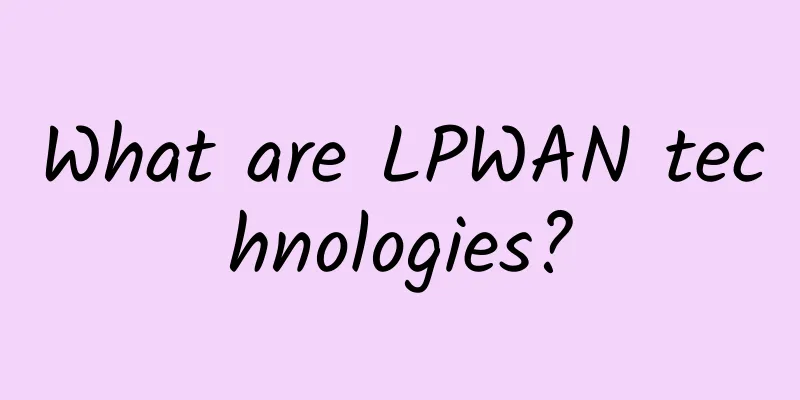What are LPWAN technologies?

|
As the Internet of Things (IoT) continues to grow, the need for efficient and cost-effective communication technologies becomes more apparent to support the growing number of connected devices. One solution to this challenge is low-power wide-area network (LPWAN) technology, which provides long-range communications with low power consumption and minimal infrastructure requirements. The most popular LPWAN technologies include LoRaWAN, Sigfox, and Narrowband IoT (NB-IoT). This article takes a deep dive into these three technologies to learn about their features, benefits, and potential applications. LoRaWAN, short for Long Range Wide Area Network, is an open source protocol developed by the LoRa Alliance, a global association of companies dedicated to promoting the standardization of LPWAN technology. LoRaWAN operates in unlicensed spectrum, specifically the Industrial, Scientific and Medical (ISM) radio band, which allows low-cost deployment and minimal regulatory restrictions. The technology is based on LoRa (Long Range) modulation technology, using a unique combination of linear frequency modulation spread spectrum and forward error correction to achieve long-distance communication with low power consumption. One of the main advantages of LoRaWAN is its flexibility, as it supports a variety of data rates and an adaptive data rate mechanism that allows devices to optimize their communications based on factors such as distance and signal strength. This adaptability makes LoRaWAN suitable for a wide range of IoT applications, including smart cities, agriculture, and industrial monitoring. In addition, the technology is able to penetrate dense urban environments and provide deep indoor coverage, making it an attractive option for building automation and asset tracking. Sigfox, on the other hand, is a proprietary LPWAN technology developed by the French company of the same name. Like LoRaWAN, Sigfox operates in the unlicensed ISM radio band, which enables low-cost deployment and minimizes regulatory restrictions. However, Sigfox uses a different modulation technique called ultra-narrowband (UNB), which enables long-range communication by transmitting data over extremely narrow radio channels. This approach enables Sigfox to achieve high spectral efficiency and interference resistance, making it suitable for applications in challenging radio environments. One of the main advantages of Sigfox is its simplicity, as the technology relies on a lightweight protocol with minimal overhead that can be easily integrated with IoT devices. In addition, Sigfox's centralized network architecture enables seamless global coverage, making it an attractive option for applications that require cross-border communication, such as logistics and supply chain management. However, the technology's limited data rate and payload size may limit its suitability for applications that require high data throughput or frequent communication. Narrowband Internet of Things (NB-IoT) is a cellular-based LPWAN technology developed by the Third Generation Partnership Project (3GPP), the organization responsible for the standardization of cellular communication technologies. Unlike LoRaWAN and Sigfox, NB-IoT operates in licensed spectrum, providing guaranteed quality of service and protection against interference. The technology is designed to leverage existing cellular infrastructure, enabling seamless integration with existing networks and minimizing deployment costs. One of the main advantages of NB-IoT is its reliability, as the technology is based on proven cellular standards and is supported by major telecom operators around the world. In addition, NB-IoT is able to provide wide-area coverage and deep indoor penetration, making it suitable for applications that require reliable connectivity in challenging environments, such as smart metering and remote monitoring. However, the technology's reliance on licensed spectrum and cellular infrastructure may result in higher operating costs compared to unlicensed LPWAN technologies. In summary, LoRaWAN, Sigfox, and NB-IoT all have unique advantages and potential applications in the evolving IoT landscape. While LoRaWAN's flexibility and adaptability make it suitable for a wide range of applications, Sigfox's simplicity and global coverage make it an attractive option for cross-border communications. At the same time, NB-IoT's reliability and integration with existing cellular networks make it a strong contender for applications that require reliable connectivity. As the IoT ecosystem continues to develop, these LPWAN technologies are likely to play a key role in supporting the diverse communication needs of connected devices. |
<<: The role of satellite communications in smart cities: enhancing urban connectivity
>>: Spiderpool: How to solve the problem of zombie IP recycling
Recommend
This year's Internet Light Expo has upgraded its black technology: these new gadgets are quite cool
On November 6, the 5th World Internet Conference ...
edgeNAT May 1st Promotion: 30% off for annual VPS and 20% off for monthly VPS, top up 500 and get 100 free, Hong Kong/Korea 2G memory package starting from 48 yuan per month
edgeNAT is a Chinese hosting company established ...
Understand HTTP and HTTPS protocols in ten minutes?
[[276795]] 1. What is a protocol? A network proto...
This article illustrates the principles of Kubernetes network communication
[[275296]] Glossary 1. Network namespace: Linux i...
What is the handshake process like when connecting to a host whose IP does not exist?
[[410045]] This article is reprinted from the WeC...
Network | Comic: What is the HTTPS protocol?
What is HTTP? The full name of HTTP protocol is H...
Tudcloud: Hong Kong VPS monthly payment starts from US$7.2, with options for high bandwidth or unlimited traffic
Tudcloud is a newly opened hosting company that p...
BandwagonHost: Los Angeles DC9 limited CN2 GIA line annual payment of 74 US dollars, 2.5-10Gbps bandwidth CN2 GIA quarterly payment starts at 46.7 US dollars
Recently, Bwh81 has added a limited edition speci...
SF Express's Liu Zhixin: Artificial intelligence helps logistics upgrade
[51CTO.com original article] On July 21-22, 2017,...
Is 6G going to overturn 5G? Musk: No, it’s my satellite internet
It stands to reason that with 5G already official...
Is 5G data expensive? Should I change my SIM card? Learn what you don’t know about 5G!
Do I need to change my phone or SIM card in the 5...
What does a communications engineer do?
As a communications engineer, I have been asked t...
Analysis of the reasons for the slowdown of 4G network speed
Although 5G has only been implemented for a year,...
How does DH+ compare to Ethernet?
When it comes to industrial communication protoco...









